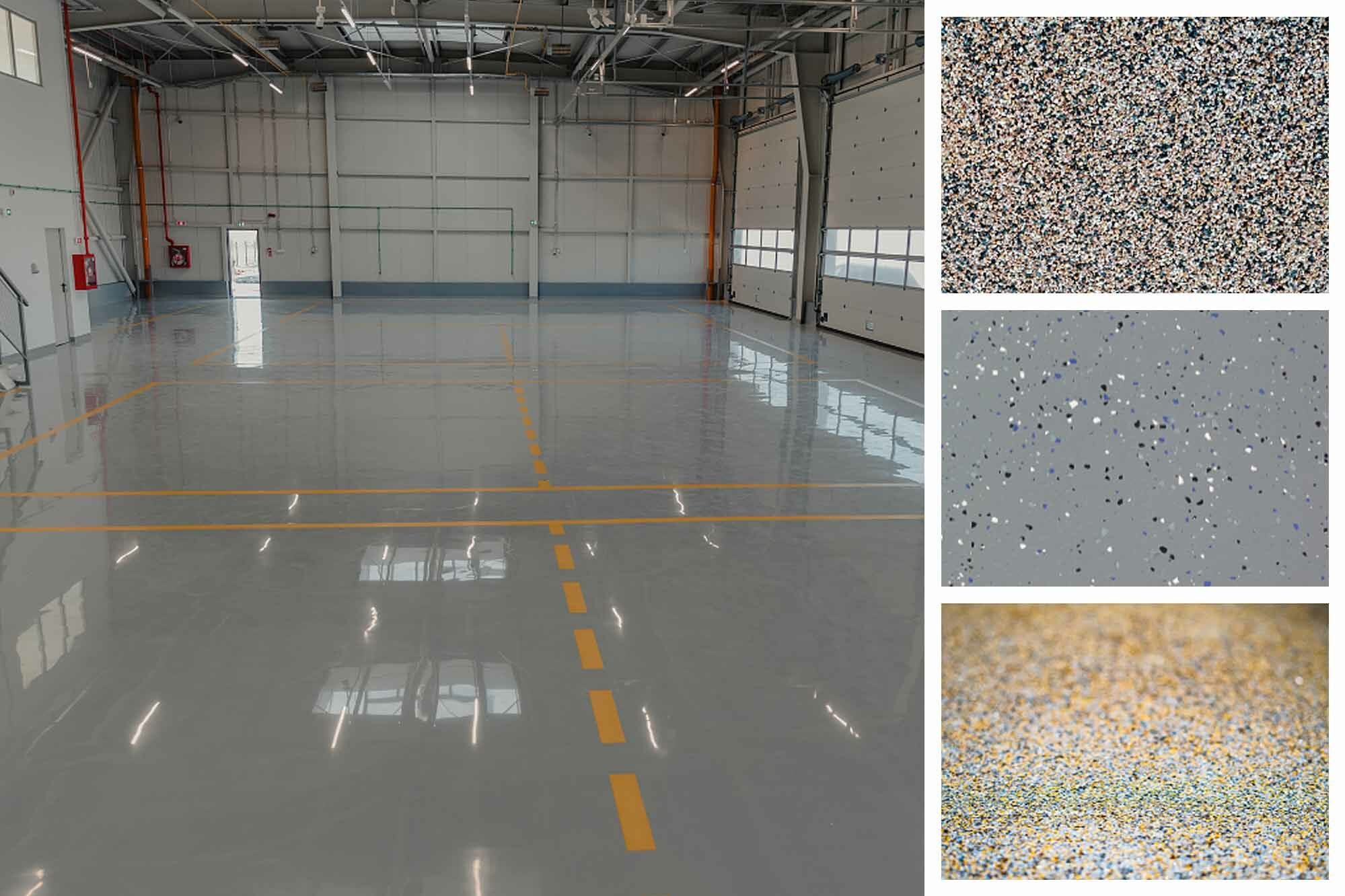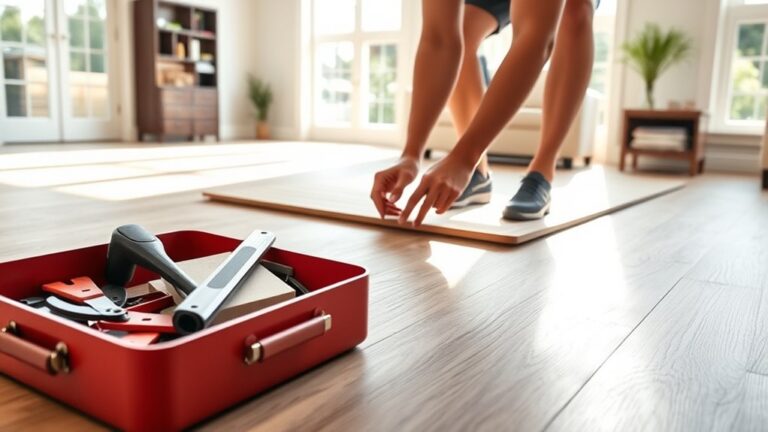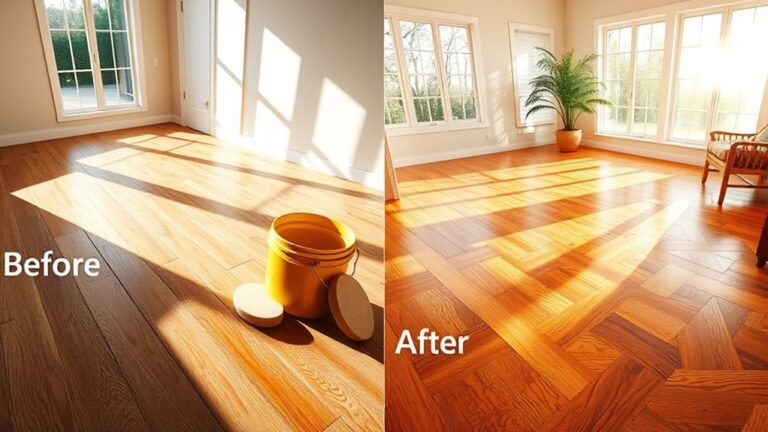To measure the thickness of epoxy flooring, use a digital thickness gauge. After preparing the epoxy surface, place the gauge perpendicular to the floor and press the probe into the coating until it touches the substrate.
The gauge will display the thickness measurement accurately. Achieving an accurate measurement helps ensure the suitability and effectiveness of the epoxy flooring for its intended purpose. By measuring the thickness, you can assess the durability and performance of the coating, as well as determine if it complies with industry standards and specifications.
Proper measurement also aids in identifying any inconsistencies or deviations during the application process, allowing for corrective measures to be taken if necessary.

Importance Of Accurate Epoxy Flooring Thickness Measurements
Accurate measurements of epoxy flooring thickness are of utmost importance for various reasons. Firstly, ensuring durability and longevity of the flooring relies on understanding its thickness. A thicker epoxy coating typically provides enhanced strength and resistance against wear and tear, thereby increasing its lifespan. Secondly, accurate measurements play a crucial role in meeting safety and compliance standards. Certain industries or environments may have specific requirements for epoxy flooring thickness to ensure safety for individuals and compliance with regulations. Finally, measuring the thickness of epoxy flooring is essential for achieving desired aesthetic results. Whether it is a specific design or a seamless finish, knowing the thickness allows for better planning and execution of the installation process.
Preparing For Epoxy Flooring Thickness Measurement
For accurate epoxy flooring thickness measurement, follow these steps to ensure a precise and reliable result. By using the right tools and techniques, you can easily measure the thickness of your epoxy flooring, ensuring a successful installation.
Gather Necessary Tools And Equipment
To ensure accurate measurement of epoxy flooring thickness, it is important to gather the necessary tools and equipment in advance. You will need a caliper or micrometer to measure the thickness, preferably a digital one for precise readings. Additionally, have a clean cloth or paper towels nearby to wipe off any debris or moisture from the surface. It is recommended to use a clean ruler or measuring tape as well to assist in the measurement process.
Ensure Clean And Dry Flooring Surface
A clean and dry flooring surface is crucial for accurate epoxy flooring thickness measurement. Before measuring, ensure that the floor is free from any dirt, dust, or liquids. Sweep and mop the area thoroughly, allowing enough time for the floor to dry completely. Any foreign particles or moisture can affect the measurement, leading to inaccurate results.
Take Safety Precautions
Prioritize safety when measuring epoxy flooring thickness. Wear protective gloves and safety goggles to avoid any potential hazards. If the area requires better ventilation, consider using a respirator to protect yourself from harmful fumes. Safety should always be a top priority during the entire process.
Step 1: Establishing A Baseline Measurement
Determining the starting point is crucial when measuring the thickness of epoxy flooring. To ensure accuracy, one must select an appropriate measurement technique. There are various methods available, including the use of non-destructive equipment such as ultrasonic thickness gauges or magnetic induction. Each technique has its own advantages and limitations, so it’s essential to choose the most suitable one for your specific situation.
Record the initial thickness measurement as accurately as possible. This will serve as the baseline for future measurements. Take note of any variations in thickness throughout the flooring surface, as well as any areas that may require special attention or additional coatings.
Remember, precise measurements are essential for proper evaluation and maintenance of epoxy flooring, ensuring its durability and longevity.
Step 2: Identifying High And Low Spots
To identify high and low spots on epoxy flooring, you can use leveling tools to detect any inconsistencies. Mark any high or low spots that you find during this inspection process. These marked areas will require further evaluation to determine the best course of action. Once you have marked the spots, measure the thickness of the epoxy flooring at these specific areas. By measuring the thickness of the high and low spots, you can gain a better understanding of the overall quality and consistency of the epoxy flooring. This information will be valuable in determining any necessary repairs or adjustments that may be needed.
Step 3: Assessing The Overall Thickness
Establishing a grid pattern is crucial in measuring the thickness of epoxy flooring. By dividing the floor into smaller sections, you can ensure more accurate measurements.
Take multiple thickness measurements across the flooring. Use a depth micrometer or a ultrasonic thickness gauge to obtain readings at various points.
Calculating the average thickness is important to get an overall idea of the epoxy flooring thickness. Add up all the measurements you have taken and divide it by the number of measurements to get the average thickness.
Step 4: Identifying Thickness Discrepancies And Solutions
After measuring the epoxy flooring thickness, the next step is to compare the measurements to the desired thickness. By doing so, you can determine if any discrepancies exist and address them accordingly. Analyzing these discrepancies is crucial to identifying their potential causes. This analysis can involve assessing factors such as the application process, material quality, or environmental conditions.
Once you have identified the potential causes, it is essential to develop a plan to correct any thickness issues. This plan may involve adjusting the application technique, sourcing higher-quality materials, or implementing proper curing methods. By addressing these discrepancies, you can ensure that the epoxy flooring meets the required thickness specifications and achieves optimal performance and durability.
Step 5: Monitoring And Maintaining Epoxy Flooring Thickness
Regular monitoring and maintenance are essential for ensuring the optimal thickness of epoxy flooring. Implementing regular thickness checks allows for early detection of any changes or deviations in the flooring thickness. By promptly addressing any changes or deviations, you can prevent further damage and maintain the integrity of the epoxy flooring.
It is crucial to follow the manufacturer’s guidelines for maintenance to ensure the longevity and performance of the epoxy flooring. These guidelines provide specific instructions on how often to check the thickness and which tools or equipment to use for accurate measurements.
Regular thickness checks and prompt actions based on the results can help you keep your epoxy flooring in optimal condition, extending its lifespan and avoiding costly repairs or replacements in the future.
Frequently Asked Questions For How To Measure Thickness Of Epoxy Flooring
What Is The Thickness Of Epoxy Flooring?
The thickness of epoxy flooring can vary depending on the specific application, but it typically ranges from 2-3 millimeters (0. 08-0. 12 inches). The thickness is determined by factors such as the level of protection and durability needed for the surface.
How Do You Measure Floor Coating Thickness?
To measure floor coating thickness, use a digital thickness gauge. Place the gauge perpendicular to the surface and press down gently to take a reading. Ensure the gauge is calibrated properly and repeat measurements in multiple areas for accuracy.
How Thick Is A Flake Of Epoxy?
The thickness of a flake of epoxy can vary, but it is generally very thin. It measures between 0. 5 to 1 millimeter in thickness.
What Is The Thickness Of Epoxy Flooring In Mm?
The thickness of epoxy flooring is typically measured in millimeters (mm).
Conclusion
To measure the thickness of epoxy flooring, you need the right tools and techniques. By following the steps outlined in this blog post, you can ensure accurate measurements and make informed decisions about your flooring project. Remember, understanding the thickness of epoxy is essential for achieving the desired results and ensuring the longevity of your flooring.
So, don’t overlook this important aspect of epoxy flooring installation. Stay precise, and your floor will stand the test of time!




